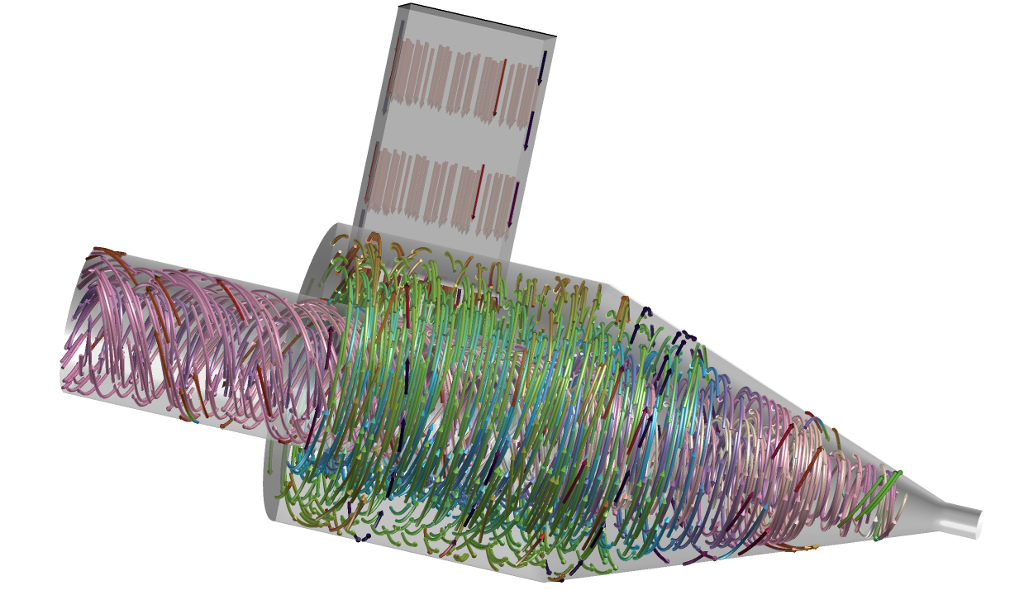Abstract
Cyclone separators play a dominant role in the industrial separation of dilute particles from an incoming gas flow. The incoming flow enters tangentially and accelerates on its way down into a conical section. This acceleration results in a strong swirling flow. The particle laden flow escapes through the bottom outlet while the rest of the flow reverses and swirls about the centreline towards the upper exit through the vortex finder. Due to the inherent presence of high swirl and very large curvature of streamlines within the flow, modelling such flow presents a challenge to this date. Boysan et al. (1984) conducted one of the first CFD simulations and found the standard k-ε turbulence model is inadequate to simulate such flows. The high swirl leads to excessive turbulent viscosities and incorrect tangential velocity patterns in CFD simulations. Witt et al. (1999) showed the accuracy of the numerical solution can be improved by using a Reynolds Stress Model for the turbulence. Stephens and Mohanarangam (2010) showed for a hydrocyclone it was possible to get accurate mean flow behaviour using a two-equation SST turbulence model corrected for streamline curvature.
This paper presents a single phase transient solver developed using the Caelus library. The solver predictions using k-ω SST with and without curvature corrections, Reynolds Stress Model (LRR) and Large Eddy Simulation (Smagorinsky and coherent structure) turbulence models are compared against laser velocity measurements to investigate the level of accuracy afforded by each turbulence model. The k-ω SST model without any curvature corrections produced the poorest predictions of the flow field, whilst the coherent structure LES was found to be in excellent agreement with the experimental measurements.

